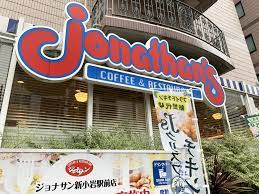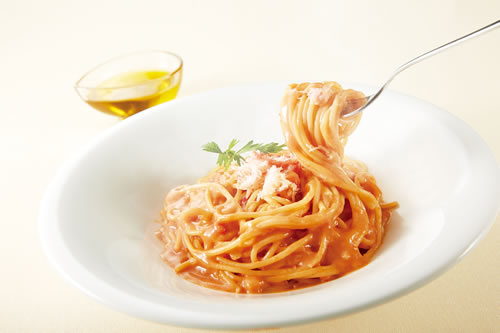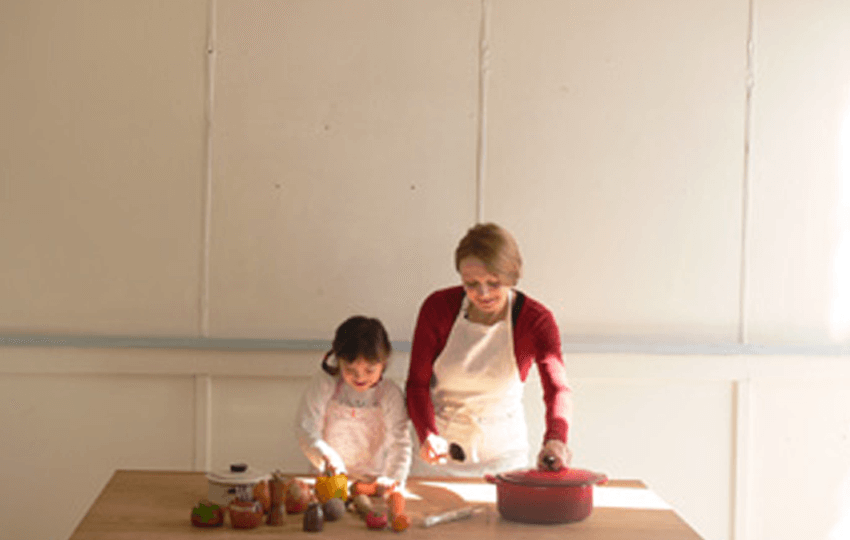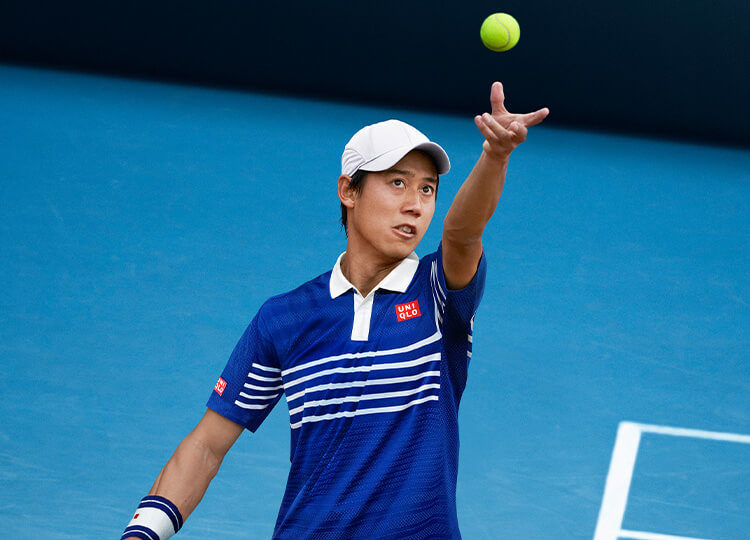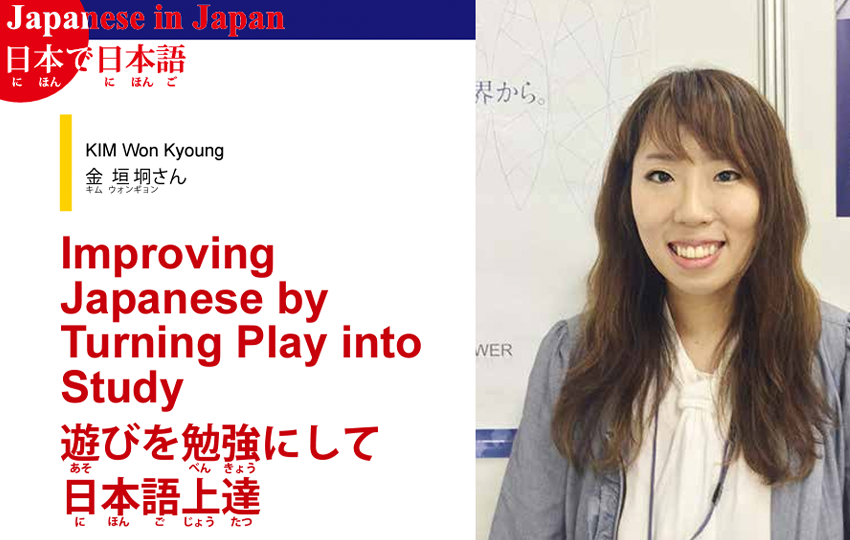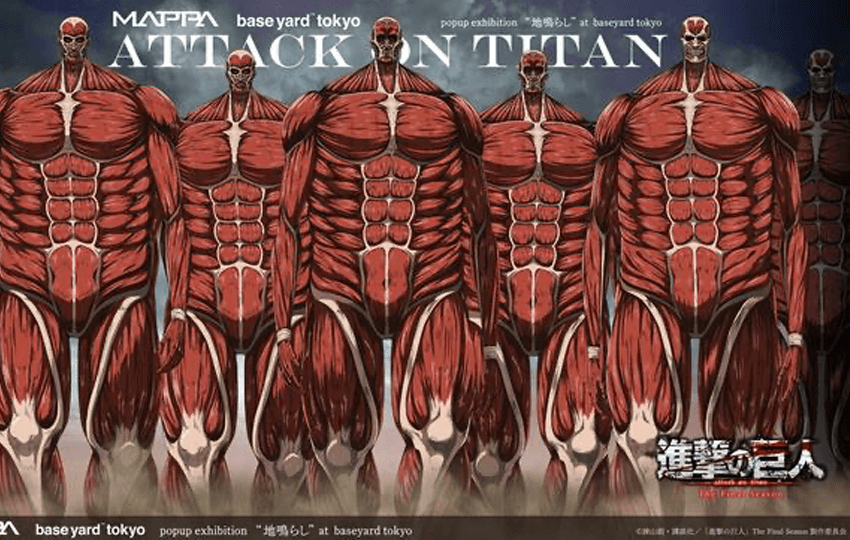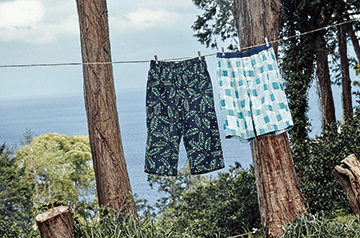-
[From August Issue 2015]
Following on from “rekijo” – women who like history – in recent years there are more and more “touken joshi,” that is women interested in swords. There are many kinds of swords in Japan. It’s said that this trend was kick-started by a video game. The swords in the game take the form of attractive young men and many women became fans for this reason.
The Tokugawa Art Museum, in Nagoya City, Aichi Prefecture, houses numerous famous swords. Up until now this museum used to mainly be visited by elderly men. But recently more and more women in their 20s and 30s are visiting the museum. “I think women have come to be fascinated by swords because they’ve entered pop culture through video games,” says YOSHIKAWA Yuki, a member of staff at the museum.
While swords are attractive artistic objects, besides their beauty, so-called famous swords also have historical tales behind them. For example, according to legend, “Katana Mei Muramasa” brought bad luck to the Tokugawa family; this sword has appeared in many games and novels and is popular nationwide. “The unique crest on the blade creates a mysterious mood and its charm draws you into its legend,” says Yoshikawa.
“I got into swords through video games and have discovered the charms of actual swords,” says NAKANE Tomoko, a sword fan. Nakane travels by night bus to visit museums all over Japan and see their swords. Sometimes she goes to the same museum three days in a row.
Besides their aesthetic charms, there are other ways to enjoy swords. As well as giving Skype-based “Samurai Experience Lessons” to American children, “Sousaku Kenbu Tachibana Ittouryu” runs “Samurai Training Tokyo,” a samurai workshop for foreigners visiting Japan.
“Sword Exercise” got started in 2008. Created by producer TAKAFUJI Ukon its key characteristic is that it gets you in shape through kenjutsu (swordsmanship) forms. Its popularity lies in the fact that in contrast to exercises that concentrate on developing muscles, it’s an easy to perform full body aerobic workout.
“I feel that the number people interested in swords has increased considerably,” says TSUNODA Tomohiro, the manager of Sword Exercise. While there has always been a high demand from men and from foreigners interested in swords for experience-based lessons, the number of female participants has increased tenfold since the start of the craze for swords amongst women.
The craze continues to spread as special displays in bookshops to sell new books on swords are set up and replicas of swords sell out. Who knows, perhaps more people will fall in love with swords in the future.
[2015年8月号掲載記事]
歴史好きな女性「歴女」に続き、最近は日本刀に興味を持つ「刀剣女子」が増えています。日本には様々な種類の刀があります。それに注目したゲームがブームのきっかけといわれています。ゲームの中では、刀は若い男性のアニメキャラクターの姿をしており、多くの女性がファンになりました。
愛知県名古屋市にある徳川美術館は、たくさんの名刀を所蔵しています。以前は美術館を訪問するのは年配の、それも男性が中心でした。ところが最近は20~30代の女性がグループで来館することが増えました。「刀剣の魅力を若い女性が知るようになったのはゲームというポップカルチャーの持つ力だと思います」と美術館職員の吉川由紀さんは言います。
刀剣は美しい芸術品ですが、名刀といわれる刀は美しさに加えて、歴史的な物語を持っています。例えば、全国的に人気のある「刀銘 村正」は徳川家に災いを呼ぶ刀という伝説があり、ゲームや小説などによく登場します。「独特の刃紋(刀に浮かぶ模様)はいかにも妖しい雰囲気を持ち、伝説に引き込まれるような魅力があります」と吉川さんは話します。
「刀に興味を持ったきっかけはゲームでしたが、刀そのものの魅力に気がつきました」と、刀剣ファンの中根智子さんは言います。中根さんは深夜バスに乗って、刀剣を鑑賞するために全国の美術館を訪れています。三日連続で同じ美術館に通うこともあります。
鑑賞の他にも、刀の魅力を楽しむ方法があります。「創作剣舞橘一刀流」は「SAMURAI TRAINING TOKYO」を訪日外国人向けに開催したり、アメリカの子ども向けにSkypeを使った「サムライ体験レッスン」を実施したりしています。
2008年からは「刀エクササイズ」を開催しています。剣術の型を取り入れシェイプアップできるのが大きな特徴で、プロデューサーのたかふじ右近さんが考案しました。筋肉トレーニングとは違い、全身を使った有酸素運動が無理なくできると好評です。
「刀剣に興味のある人がとても増えたことを実感します」と、マネージャーの角田知弘さんは言います。体験レッスンを希望する男性や刀に興味のある外国人はもともと多かったのですが、刀剣がブームとなってからは女性が10倍以上増えました。
刀関連の本が新たに発売されて特設コーナーが設けられたり、模造刀が品薄状態になったりとブームは広がっています。刀剣に魅了される人はこれからも増えるでしょう。文:土屋えみ
-
Tap Water in Japan is Safe to Drink
- Hiragana Times
- Jun 24, 2016
[From August Issue 2015]
Today, more than 97% of Japanese have access to the public water supply. The water supply is hardly ever cut off due to shortages. In general, no matter where you are in Japan, it’s possible to drink the tap water. However, although the Ministry of Health carries out 51 checks on water quality, some people install filters or buy mineral water.
In June, an event was held in eight locations in Tokyo to compare the taste of tap water with store bought mineral water. It was organized by the Tokyo Metropolitan Government Bureau of Waterworks. Passersby were asked to drink tap water and mineral water – both at a temperature of between 10°C to 15°C – without knowing which was which.
This wasn’t the first time this event had been held. During the fiscal year 2014 (April 2014 – March 2015), it was held 153 times and a total of 52,747 people took part. Forty six point seven percent of them answered, “Tap water tastes better.”
The 1960s was an era of rapid economic growth and even purified, tap water had a nasty smell because of pollution in rivers. Since at that time a lot of people were moving from regions with good quality water to metropolitan areas, there was a widespread perception that “tap water in large cities tastes bad”.
Since then the taste of tap water in large cities has improved due to developments in water purification technology and stricter controls on pollution. Some municipalities, such as Tokyo Prefecture are tackling the issue by setting “water quality targets.” YAMADA Tomoaki, PR manager at the Tokyo Metropolitan Government Bureau of Waterworks, says, “I’m glad when someone tells me, ‘I’ll drink tap water from now on since it tastes better.’”
To demonstrate the good taste of its tap water, the Tokyo Metropolitan Government Bureau of Waterworks distributes “Tokyo Water” in PET bottles at events. Other local governments, too, are selling and giving out PET bottles of their tap water to advertise its good taste and quality. Such water is sometimes handed out during natural disasters.
Japan’s waterworks is highly regarded: its pipes have few leaks, its water purification technology is high tech, and its equipment is well maintained. The government and some local authorities in Japan have, for many years, been offering technical cooperation to countries with poorly developed waterworks.
Bureau of Waterworks Tokyo Metropolitan Government
Text: SAZAKI Ryo[2015年8月号掲載記事]現在、日本の水道普及率は97パーセントを超えます。供給量が足りず断水が起きることはほとんどありません。通常どの地域であっても、蛇口から出てきた水を飲むことができます。厚生労働省が51の水質基準項目を定め管理していますが、浄水器をつける人やミネラルウォーターを買う人もいます。
6月に都内8カ所で、水道水と市販のミネラルウォーターのおいしさを比べるイベントが開かれました。東京都水道局が主催するもので、水道水とミネラルウォーターを、どちらも10~15度に温度を調整した上で、どちらがどちらか知らせずに道行く人に飲んでもらいました。
このイベントは、今回が初めてではありません。2014年度(2014年4月~2015年3月)にも153回、合計5万2,747人に行われ、46.7パーセントの人が「水道水の方がおいしい」と回答しました。
1960年代の高度経済成長期には河川が汚れ、浄水処理しても水道水にいやな臭いが残るようになりました。当時は水質のよい地方から都市部に移り住んだ人が多かったため、「都会の水道水はまずい」というイメージが広まりました。
その後は、公害対策が進んで河川の水質がよくなったことや、水を浄水処理する技術が進歩したことから、都市部の水道水の味は向上しました。東京都のように、「おいしさに関する水質目標」を独自に設定して、取り組みを進めている自治体もあります。東京都水道局広報係長の山田智章さんは、「『おいしいから今後は水道水を飲みます』と言っていただけるのが嬉しいですね」と話します。
東京都水道局では水道水のおいしさをアピールするため、ペットボトルに詰め、「東京水」と名づけてイベントで配布しています。他の自治体でも、おいしさや水質のプロモーションを目的に、ペットボトル入り水道水を販売したり配ったりしています。緊急時や災害時に支給されることもあります。
日本の水道は、水道管から水がもれる率が低い、浄水の技術が高い、設備のメンテナンスがよいなどの点で優れています。日本政府や自治体は、水道が未整備の国に対して長年技術協力をしています。
東京都水道局
文:砂崎良 -
[From August Issue 2015]
Dace PENKE
Wife of the Ambassador of the Republic of Latvia
Located in Northern Europe, the Baltic state of Latvia gained its independence from the Soviet Union in 1991. Mrs. Dace PENKE has been living in Tokyo since her husband, Mr. Normans PENKE, was stationed in Japan on September 2013 as the Ambassador of Latvia. She studied architecture at university and finds Tokyo’s combination of traditional and modern very interesting.
When she has time, she goes to exhibitions at galleries and attends craft classes and workshops. She is particularly impressed with the transportation system in Tokyo. “I can go anywhere by train, subway, and bus. It is amazing! However, the only challenge for me is the language barrier, as I’ve found that not so many Japanese speak English. Learning Japanese is not an easy task, but I try to do my best,” she says.
So many things have impressed her in Japan. For example, fresh and delicious Japanese food, sushi, and sashimi are her favorite dishes. She talked about a special experience at a traditional Japanese restaurant in Kagurazaka where she ate Japanese kaiseki.
“The attention to detail, the presentation of the food, the seasonal and local food, the food textures, the service, and so on, is amazing. I saw a geisha performance for the first time, and I really felt the hospitality of the Japanese in this traditional setting. Japanese hospitality is something we want to introduce in my country. Japan’s old traditions, like wearing kimono, tea ceremonies, traditional crafts, and its many religious ceremonies, are still alive. I hope that these traditions will be practiced for many years to come. One of the strengths of the Japanese people is the way they keep traditions alive,” she says.Speaking of Latvia, the four cornerstones of the Latvian economy are agriculture, chemical industries, logistics, and woodworking. Other prominent sectors include textiles, food processing, machine production, and green technologies. Innovations made in Latvia are highly appreciated by world markets. Recently Latvia has been focusing on design.
“The Latvian Embassy in Japan just organized the Latvian Design and art week in Minami Aoyama at the gallery Athalie, and it was very successful. Art and design traditions are very strong in Latvia; rooted in traditional craftsmanship, they also draw on contemporary global trends. Many young Latvian designers that have been studying abroad are now coming back to Latvia and expressing their creativity in amazing ways. I really want to promote such things to Japan,” says Mrs. Penke.
“The most important national festival of the year is Jani (Summer Solstice Festival). On this day, the cities empty, and every civil servant and bank clerk shows their pagan side. It started out as an ancient fertility festival celebrated after sowing the crops and before gathering the harvest. Families get together in their countryside homes. They make bouquets and wreaths out of herbs, flowers, and leaves. Women traditionally wear flower wreaths, while men have theirs made of oak leaves or twigs.”
“The livestock and fences are adorned with wreaths. Gates and rooms are decorated with birch, oak, and rowan branches. Latvians sing, dance, eat, and are merry during Jani. Cheese with caraway seeds, meat patties, and beer is a must for every table. People light bonfires and celebrate until sunrise. Romantic couples leave the crowds to look for the ‘flower of the fern,’ which is alleged to bloom only on the night of Jani,” says Mrs. Penke.
“The Latvian folk singing tradition is more than a thousand years old, and those folk songs are deeply connected with our spirit. For Latvian people singing and music is not just a form of entertainment but the core of our identity and one of the most important reasons why Latvia, a small nation, was able to preserve its language and culture for many centuries. These factors also played a major role when Latvia first gained independence in 1918 and re-gained it after the collapse of the Soviet Union in 1991.”
“These folk song texts are called dines and come in a format of four short lines. Dainas can be sung as songs or recited as short poems. About 1.2 million dines with 300,000 different melodies have been identified. Our drains have been included in UNESCO’s Memory of the World list. Being brief forms of expression, dines and haiku have something in common,” she says.
“The musical relationship between Japan and Latvia is very active. “More than ten years ago, the Latvia Japan Music Association was established by Japanese people who had visited Latvia and been impressed by Latvia and its music. One of the most interesting things is that there is a choir called Gaisma (Light), where Japanese men and women from the association sing Latvian songs in the Latvian language.”
“Ms. KATO Tokiko’s song ‘A Million Roses’ became a big hit. This song was composed by the Latvian composer Mr. Raimonds PAULS. Culture is the bridge between nations that reflect that we all share the same core human values. At a basic level, we are all the same, with the same aspirations for peace, freedom, and happiness,” says Mrs. Penke.
The people in Latvia appreciate nature. “I recommend that the Japanese visit my beautiful country. A must-see is the capital city of Riga which has more than 400 Art Nouveau buildings. It has been named one of the most attractive tourism destinations in the world by leading newspapers. The wonderful old town – old Riga – is 800 years old and is on the UNESCO heritage list.”
“The seaside town, Jurmala, with more than 500 kilometers of pristine white sand beach, is beautiful. If you want to see an old castle, Sigulda has great views of a river and valley. I also recommend Cesis, an 800-year-old castle town.”
“It takes about 14 hours from Tokyo to Riga via Helsinki. In Latvia a lot of information is available online and printed material is available for tourists. Every city has a tourist information bureau with maps and clear explanations, mostly in English. There are several companies specializing in attracting tourists to Latvia from Japan. So please come to Latvia,” she says.
Embassy of the Republic of Latvia in Japan[2015年8月号掲載記事]駐日ラトビア共和国大使夫人
ダッツェ・ペンケさん
ラトビアはヨーロッパの北部に位置するバルト三国の一つで、1991年にソ連から独立を勝ち取りました。ダッツェ・ペンケ大使夫人は、夫のノルマンス・ペンケ・ラトビア大使が日本に赴任した2013年9月以来共に滞在しています。夫人は大学で建築を学んだので、東京の伝統と近代の組み合わせにとても興味を持っています。
時間があるときにはギャラリーへ行ったり、工芸教室やワークショップに参加したりします。東京の交通システムには特に感銘を受けています。「電車、地下鉄、バスでどこへでも行くことができるのは驚きです! でも、英語を話せる日本人はそう多くないので、言葉の壁を乗り越えるのが大変です。日本語を学ぶのは容易ではありませんが、ベストをつくしています」と夫人は言います。
夫人を感動させたものはたくさんあります。たとえば新鮮でおいしい日本料理。すしや刺身は大好きです。神楽坂の料亭で食べた懐石料理の特別な体験についてこう話します。
「繊細な盛り付け、季節感あふれる地の食材、サービスなど、本当にすばらしいです。芸者の踊りも初めて見ました。この伝統的な場で日本のおもてなしを心から感じました。日本のおもてなしは私の国にも導入したいものです。着物、茶の湯、伝統工芸、宗教行事など日本の伝統は今も息づいています。このような伝統は将来も続いてほしいと思います。日本人の強さの一つは伝統を守っていることです」と、夫人は言います。ラトビアといえば、経済の四つの柱は農業、化学産業、流通、木工です。他の分野では、織物、食品加工、機械生産、グリーンテクノロジーがあります。ラトビアの技術革新は世界市場では高く評価されています。最近ではデザインに力を注いでいます。
「ラトビア大使館はラトビアアート・デザインウィークを南青山のギャラリー、アタリーで開催し、大好評でした。ラトビアのアートとデザインの伝統は強く残っています。伝統的な職人技に根付き、現代のグローバルトレンドにも影響を与えています。外国で学んでいる多くの若者が今ラトビアに戻ってきて、すばらしい想像力を発揮しています。それらを日本でもプロモートしたいと思います」とペンケ夫人。
「一年を通じて最も大切なお祭りはヤーニ(夏至祭)です。この日は街が空っぽになり、公務員や銀行員は普段とは異なる一面を見せます。これは、穀物の種まきをした後や収穫する前に行われる古代の盛大な祭から始まりました。家族は田舎の家に集まります。ハーブや花、葉っぱなどでブーケやリースを作ります。女性は伝統的にリースを、男性は樫の葉や小枝で作った冠を身に付けます」。
「家畜や垣根も花輪で飾ります。門や部屋は樺の木や樫、ナナカマドの枝で飾ります。ヤーニの期間中、ラトビア人は歌ったり、踊ったり、食べたりして楽しい時を過ごします。キャラウェイの種入りチーズやミートパティー、ビールは欠かせません。たき火をしたりして一晩中過ごします。恋人たちは人々から離れ、ヤーニの夜にしか咲かないといわれるシダの花を探します」とペンケ夫人。「ラトビア人が民謡を歌う伝統は、千年以上前から続いていますが、ラトビア人の精神と深くつながっています。ラトビア人にとって歌うことは単なる楽しみではなく私たちのアイデンティティーの核であり、ラトビアのような小さな国が何世紀もの間自国の言語や文化を守ることができたのは歌や音楽のおかげといっても過言ではありません。これが1918年にラトビアが初めて独立を勝ち取り、1991年のソ連崩壊後、再び独立を回復するための最も大きな力となりました」。
「民謡のテキストはダイナスと呼ばれ、短く4行でできています。ダイナスは、歌われたり、短い詩として朗読されたりします。120万のダイナスに30万の異なった曲が確認されています。ダイナスはユネスコの世界無形文化遺産に登録されています。簡略した表現法をするダイナスと俳句は共通点があります」。
「日本とラトビアの音楽でのつながりはとても強いです。10年以上前にラトビアを訪れ、国や音楽に魅了された日本の人々によって日本ラトビア音楽協会が設立されました。最も興味深いことの一つはガイスマ(光)と呼ばれるコーラスグループで、協会の日本人男性と女性がラトビア語でラトビアの歌を歌うことです」。
「加藤登紀子さんの歌『百万本のバラ』は大ヒットました。この歌はラトビアの作曲家、ライモンズ・パウルスが作りました。文化は国を結ぶかけ橋であり、人間が同じ価値を分かち合うことを証明するものです。基本的には私たちは同じで、平和や自由、幸福を同じように熱望しています」とペンケ夫人は言います。ラトビアの国民は自然を大切にしています。「日本の方に美しい私の国へ来てほしいですね。400以上のアールヌーボーの建築物がある首都のリガは見逃せません。一流紙でも世界の最も魅力的な観光地の一つとして名前をあげています。リガの旧市街は800年の歴史があり、ユネスコの世界文化遺産に登録されています」。
「海に面した街ユールマラには、500キロ以上続く手つかずの美しい白浜が昔からあります。古城を見たい人にはスィグルダがお勧めです。そこからは大河や谷を見渡せます。800年の歴史を持つ城下町のツェーシスもおすすめです」。
「東京からリガまではヘルシンキ経由で約14時間です。ラトビアでは観光客のための様々な情報がオンラインで得られ、パンフレットも用意されています。どの都市にも地図や詳しい説明(ほとんどは英語)をしてくれる観光案内所があります。日本からはラトビア観光を専門とする旅行会社もありますので、ぜひラトビアにいらしてください」。
駐日ラトビア共和国大使館 -
This outdoor museum has a collection of rare architecture built in the Meiji era (19th to 20th centuries). This year it celebrates its 50th anniversary. Here you can enjoy a light meal at the former Imperial Hotel built by the distinguished American architect Frank Lloyd WRIGHT. Steam locomotives, retro Kyoto trams, and buses are operated every day, and can be used to move around the vast grounds. Many seasonal events are held, including sessions where visitors can wear kimono or hakama and have a commemorative photo taken. It is often used as a location for movies.- Access: 20-minute bus ride from Inuyama Station on the Meitetsu Inuyama Line. Near the Meiji-mura bus stop.
- Business hours: from 9:30 am to 5:00 pm (hours differ depending on the season)
- Closed days: August 4, 18, 25, December 31, every Monday from December to February. Closed on some days in January for maintenance.
- Admittance: 1,700 yen for adults (aged 18 and over). 2,700 yen for a ticket with a one-day pass for rides.
Meiji-mura Museum
明治時代(19~20世紀)を中心とした貴重な建造物を集めた野外博物館。今年オープンから50年を迎えた。著名なアメリカ人建築家、フランク・ロイド・ライトが建てた旧帝国ホテルでは軽食が楽しめる。蒸気機関車やレトロな京都市電、バスが毎日運転を行い、広大な敷地内の移動に利用できる。着物や袴姿での記念撮影体験や、季節ごとのイベントも数多く開催。映像作品のロケに使われることも多い。- 交通:名鉄犬山線犬山駅から路線バス明治村行き20分、下車すぐ。
- 営業時間:午前9時30分~午後5時(季節によって時間帯の変更あり)
- 休村日:8月4日、18日、25日、12月31日、12~2月の毎週月曜日。1月に数日間メンテナンス休日あり。
- 入村料:大人(18歳以上)1,700円、乗り物一日券付きは2,700円
-
[From August Issue 2015]
“Jonathan’s” is a family restaurant franchise that has approximately 300 restaurants in the Tokyo metropolitan area. The numerous dishes on offer contain carefully selected ingredients sourced from various regions. “Appetizers” are reasonably priced at 250 yen a dish and are popular with those who fancy a light meal or something to nibble on while having alcoholic drinks. Some restaurants locations also offer home delivery.
[No.1] Tandoori Chicken & Mexican Pilaf 899 yen
This long-selling dish has been on the menu for over 20 years. The curry-flavored chicken and spicy Mexican pilaf (fried rice) pairing has become a favorite for many.

[No.2] American Sauce Spaghetti with Snow Crab 869 yen
This pasta dish is made with flaked snow crab meat and is topped with a specially-made American sauce that gives it a creamy finish. It is a classic and popular Jonathan’s dish.

[No.3] Doria with Brightly Colored Vegetables 799 yen
This rice casserole contains lots of vegetables. The dish is accentuated with thick cream and a signature meat sauce.

Availability and prices may vary according to the restaurant.
Jonathan’s[2015年8月号掲載記事]「ジョナサン」は首都圏を中心に約300店舗を展開しているファミリーレストラン。各地から厳選したこだわりの食材を使った料理が多い。一品250円と手頃な価格の「アペタイザー」は、軽く食べたい人やお酒のおつまみに人気。宅配を行っている店舗もある。
【No.1】タンドリーチキン&メキシカンピラフ 899円
20年以上のロングセラー。やみつきになる人が多い、カレー風味のチキンとピリリと辛いメキシカンピラフ。
【No.2】ずわい蟹のアメリカンソーススパゲッティ 869円
ずわい蟹のほぐし身を使い、特製アメリカンソースでクリーミーに仕上げたパスタ。ジョナサンの定番人気商品。
【No.3】1日分の緑黄色野菜が摂れるドリア 799円
野菜をたくさん使ったドリア。濃厚なクリームと自慢のミートソースがアクセントになっている。
店舗により販売有無や価格は異なります。
ジョナサン -
[From August Issue 2015]
YOKOYAMA Adina
Last summer Romanian-born YOKOYAMA Adina changed her job description from “Eastern European Cuisine researcher” to “Genuine Cuisine Researcher.” This was because she had broadened her role from teaching Eastern European cuisine to introducing people to all kinds of recipes that use no additives or refined ingredients.
Adina got married in 2005 after coming to Japan to work as a model in 1994. Together with her husband Daiki, she ran an importing business based in Chiba City. Being very busy with work, Adina struggled with constant skin problems. In addition, Daiki suffered from eczema and their oldest son struggled with childhood obesity and eczema.
In search of a simpler lifestyle, Adina and Daiki decided to move to Higashikawa Town in Hokkaido in 2006. Up until then the whole family had mostly eaten food at restaurants or meals bought at convenience stores, but their options were limited in Higashikawa Town. Adina, who had not so much as picked up a kitchen knife before, had no choice but to begin cooking for the family. It was then that memories of her beloved grandmother Anna’s cooking came back to her.
As Romania was part of the Soviet bloc until 1989, the country had not been much influenced by Western culture. Without using any artificial flavorings, her grandmother Anna, like many others, prepared simple home-cooked meals using only natural ingredients that had been around since ancient times. By cooking these family recipes, Adina realized that the health of her family was improving. Going without makeup, Adina also saw an improvement in her skin.
Adina, who learned the importance of food through personal experience, began to teach herself about nutrition and how to prepare dishes from other countries. Eventually, while teaching Romanian cuisine to others, she began to introduce recipes that didn’t include additives or refined ingredients. Her students were mostly veteran homemakers with advanced cooking skills, who showed interest in the idea of cooking meals only with natural ingredients. In 2013 she published a recipe book.
A decision was made to refer to natural ingredients and unprocessed food as “genuine,” and Adina changed her title accordingly. Last year Adina and her husband began sponsoring an event called “Genuine Hokkaido Village” that promoted the merits of a simple lifestyle. The event attracted 14 like-minded organizations, including a group of high school students, and by focusing on the benefits of food covered a wide range of themes including health, the environment, and even beauty.
Adina’s homemade pastries are available by mail order. The name of her mail order store is MamaMare, which means “Grandma” in Romanian. The goal is to make healthy food using simple ingredients that would’ve been found in Grandma Anna’s kitchen. She hopes that people will consider making their diet healthier, even if it’s only a little.
Home Made Mail Order Cafe MamaMare
Text: ICHIMURA Masayo[2015年8月号掲載記事]横山アディナさん
ルーマニア出身の横山アディナさんは、昨年の夏、自身の肩書きを東欧料理研究家から「ほんもの料理研究家」に変更しました。東欧料理を教える立場から、添加物や精製したものを使わないレシピの紹介に活動が広がったためです。
アディナさんは1994年にモデルとして来日し、その後2005年に結婚。夫のダイキさんと千葉市で輸入業を営んでいました。しかし仕事が忙しくアディナさんは常に肌荒れに悩んでいました。ダイキさんはアトピーの症状があり、長男も小児肥満とアトピーに悩んでいました。
アディナさんとダイキさんはもっとシンプルに暮らそうと2006年に北海道東川町への移住を決めます。それまで一家の食事は外食かコンビニなどで買った惣菜でしたが、東川町では飲食店の数が限られます。それまで包丁を握ったこともなかったアディナさんも必要にせまられて料理をするようになりました。そのときに思い出したのが、大好きだった祖母アンナさんが作ってくれた料理です。
ルーマニアは1989年まで共産圏で西側の文化はほとんど入ってきていませんでした。家庭での料理も化学調味料は使わず、アンナおばあさんをはじめ多くの人が昔からある天然のものだけでシンプルに仕上げていました。そのレシピで料理を作るうちに、アディナさんは家族の体調がよくなっているのに気がつきます。アディナさんもほとんどノーメイクで過ごすほど肌の調子が良くなりました。
経験から食事の大切さを実感したアディナさんは独学で栄養や各国の料理を勉強し始めました。そして、ルーマニア料理を教えつつ、添加物や精製したものを含まないレシピを提案するようになります。集まったのはアディナさんよりも料理の技術が上のベテラン主婦ばかりでしたが、天然のものだけで料理を作るという発想に興味を示しました。2013年にはレシピ本を出版します。
2人は素材そのもの、加工していないものを「ほんもの」と呼ぶことにし、アディナさんの肩書きを変更。昨年からシンプルな暮らしを提案する「北海道ほんものヴィレッジ」を主催しています。扱うテーマは食を中心に健康や環境から美容まで幅広く、2人の考えに賛同する、高校生を含め14の団体が参加しました。
アディナさんの作るスイーツは通信販売でも購入することができます。店名はMamaMare。ルーマニア語で「おばあさん」の意味です。目指すのはアンナおばあさんのキッチンにあったシンプルな材料で作る体にやさしい食べ物。少しでも体にいい食生活を考えてほしいという願いを込めています。
ホームメイド通販カフェ MamaMare
文:市村雅代 -
[:ja][From August Issue 2015]
ユニクロ
プロテニスプレイヤーの錦織圭選手は今年の全仏オープンで初のベスト8入りを果たしました。錦織選手のテニスウエアに必ず入っていたのがカジュアルブランド「ユニクロ」のロゴマークです。2011年以来、錦織選手とスポンサー契約を結んでいるからです。
ユニクロというブランド名は「ユニーク・クロージング・ウエアハウス」を短く縮めたものです。親会社はファーストリテイリング(FR)です。もともとは1949年に山口県宇部市で設立された「メンズショップ小郡商事」でした。2015年2月末現在、FRグループ全体で世界中に2,872店舗を展開しています。その半分以上の1,558店舗がFRの中心的な会社であるユニクロです。
ユニクロの名前を一躍有名にしたのは1998年に発売したフリースでした。豊富なカラーと1,900円という値段で、評判となりました。2007年にはヒートテックが大成功を収めます。ヒートテックは「従来の綿素材に代わる、機能性の高いインナーが欲しい」という声に応えて開発されました。
これまでにないしなやかさや薄さは「まるで着ていないような気持ちよさ」として話題になりました。そのため、2007年の秋冬は生産が追いつかず、品切れ店が続出。夏に活躍するインナーでは、汗を吸ってもすぐに乾くエアリズムが注目されています。
ユニクロは高い品質と手ごろな価格の商品を世界に提供する製造小売業(SPA)として知られています。SPAとは商品の企画から生産、物流、販売まですべて自分の会社で行うビジネスモデルです。他社が真似できないユニクロ商品の数々はこの仕組みがあったからこそ生まれたものです。
ユニクロはファッションを通じて世界とつながることを目指しています。代表の柳井正さんは「世界中のあらゆる人々に、良い服を着る喜びや幸せ、満足を提供します」と会社の考えを説明。実際、ユニクロは素材の調達や生産、販売などで海外との関係を深めています。服作りだけでなくビジネスモデルとしてもユニークな会社といえるでしょう。
株式会社ユニクロ
文:伊藤公一[:en][From August Issue 2015]UNIQLO
For the first time in his career, pro tennis player NISHIKORI Kei made it to the quarterfinals of this year’s French Open. During the tournament he wore the logo of the casual fashion brand “Uniqlo” affixed to his tennis wear. This is because Uniqlo began sponsoring him in 2011.
The brand name “Uniqlo” is an abbreviation of “Unique Clothing Warehouse.” The parent company is Fast Retailing (FR). Formerly it was “Men’s Shop Ogoori Shoji” – a company founded in 1949 in Ube City, Yamaguchi Prefecture. As of the end of February 2015, the FR group had a total of 2,872 shops around the world. FR’s core business Uniqlo accounted for 1,558 of these stores; more than half.
Uniqlo was an overnight sensation when it started selling fleece jackets in 1998. It established its reputation because of the range of colors on offer and the low price of 1,900 yen. In 2007, Heattech became a huge success. Heattech was developed in answer to a demand to “replace cotton thermal underwear with garments made from another material.”
Heattech’s unparalleled snug fitting lightweight fabric that “feels as if you’re not wearing anything,” was much discussed. As a result, in the fall-winter season of 2007 (to 2008), production failed to keep up with demand and Heattech products sold out in one shop after the other. Now Airism – suitable wear for summer that absorbs sweat and is quick to dry – is in the spotlight.
Uniqlo is known as an SPA (specialty store retailer of private label apparel) and offers good quality reasonably priced products to the world. SPA is a business model in which everything is done in-house; from product planning, to production, to distribution, to sales. It’s thanks to the SPA system that Uniqlo was able to create so many unique products.
One of Uniqlo’s aims is to unite the world through fashion. President YANAI Tadashi explains the company’s philosophy: “We allow people the world over to attain the joy, happiness, and satisfaction that comes from wearing quality clothing.” In fact, Uniqlo is strengthening its ties with other countries through the procurement of materials, manufacturing, and sales. It’s fair to say that Uniqlo is an unusual company not only because it manufactures clothing, but also because of its business model.
Uniqlo Co., Ltd.
Text: ITO Koichi[:] -
[:ja][2015年8月号掲載記事]
金 垣坰さん
「中学時代、岩井俊二監督の映画『Love Letter』を見てすごく感動しました」と韓国人の金垣坰さんは日本に興味を持ったきっかけを話します。「映画の中で描かれている町の風景や言葉は韓国とは全然違うのに、登場人物が喜んだり悲しんだりするところが韓国人の一般的な情緒と全く同じでした。それまで、外国人はみんな自分達とは違うはずと思っていた私にとっては新鮮な驚きでした」。
金さんは2012年4月に日本に来ました。赤門会日本語学校のビジネス就職クラスで日本語力をブラッシュアップしながら就職活動をしました。現在、株式会社ヒューマンパワーという外国人に特化した人材紹介会社で働いています。「日本での2つ目の職場です。以前の自分のように、日本で働きたい、日本で自分の夢を実現させたいと思っていらっしゃる外国人の方々が目標に近づけるよう努めています」。
金さんが日本語の勉強を始めたのは大学でした。「日本語を専攻すれば、少なくとも私の大好きな日本の歌やドラマを、歌詞カードや字幕なしでもわかるようになるかな、という軽い気持ちでした」。
しかし、歌やドラマを通じて日本語に親しんできた金さんには、授業はすぐにつまらないものになってしまいました。そこで考えたのは、遊びを勉強にすればいいということでした。金さんは好きなアイドルが載っている雑誌を買い、辞書を引きながら読みました。また、日本人の友達をつくり、メールでのやり取りも始めました。
「最初は、雑誌1ページを訳すのに1時間以上かかりましたが、だんだん文章の構造がわかるようになりました。日本の文化や風習を学ぶこともできました。茶柱が立つといいことがあると知ったのもそのおかげです」と笑います。1年後、金さんの日本語は日本の友達が驚くほど上達しました。
日本語の勉強で大変だと思うことは敬語だと金さんは話します。「最近『~させていただく』という言葉を、相手にやってもらうときも使ってしまい、冷や汗をかきました。でも、日本語の勉強で楽しいと思うところも敬語です。使いこなすのは難しいですが、正しくきれいな言葉遣いをしようと常に意識することで、私自身の言動も丁寧になると思います。そしてそれが相手に良い印象を与えることができます」。
休日はその日の気分で知らない街を歩くのが好き、と金さん。「都内の路線図を開き、行ったことのない駅を一つ決めます。そして、あてもなくその街をぶらぶら歩きながら、冒険を楽しみます。そうやって気持ちを切り替えると、たまっていたストレスも軽くなり、また明日もこの国でがんばろうと元気になれます」。
株式会社ヒューマンパワー[:en][From August Issue 2015]KIM Won Kyoung
“Back in middle school, I was really inspired by the movie ‘Love Letter’ directed by IWAI Shunji,” says KIM Won Kyoung from South Korea, explaining how she first became interested in Japan. “Even though the scenery of the towns and the language were completely different to South Korea, the characters experienced exactly the same kind of highs and lows as Koreans do. That was an eye-opener for me as I had assumed up until then that all foreigners were different from us.
Kim came to Japan in April 2012. She searched for a job while trying to brush up her Japanese skills in the Business Shushoku (Job Hunting) Class at the Akamonkai Japanese Language School. She currently works for Human Power Co., Ltd., an employment agency that specializes in non-Japanese talent. “It’s my second job in Japan. Just like me when I first came to Japan, there are many foreigners wanting to work in Japan and realize their dreams here, so I’m doing my best to help them achieve their goals.”
Kim started learning Japanese in college. “Without taking it too seriously, I thought that if I majored in Japanese, at least I would be able to understand my favorite Japanese music and television shows without needing the translated lyrics or subtitles.”
However, even though Kim was familiar with Japanese through songs and TV dramas, she soon found classes boring. That’s when the idea occurred to her to turn play into study. She went out and bought a magazine featuring one of her favorite singers and read it while thumbing through a dictionary. Furthermore, she made Japanese friends and even corresponded with them via e-mail.
“In the beginning it would take me over an hour to translate one page of a magazine, but gradually I began to understand the sentence structures. I was also able to learn about Japanese culture and customs. I learned about things such as ‘when tea stalks float, it’s an auspicious sign,’” she laughs. Kim’s Japanese friends were surprised at how quickly her Japanese improved in just one year.
Kim says that learning polite Japanese is definitely a struggle for her. “Recently I used the phrase ‘sasete itadaku’ hoping to get a favor out of somebody and I broke out in a cold sweat. But courteous language is also an interesting part of learning Japanese. Mastering it is difficult, but when I’m trying to use the language correctly, I become self-aware and find that my actions as well as my words become more polite. That’s a great way to make a good impression on people.”
On her days off she likes to walk around an unfamiliar area that she picks depending on her mood that day. Kim says. “I’ll open up a train map of the city and decide on a station I haven’t been to before. Then, without any particular goal in mind, I’ll just wander around the district and enjoy my own little adventure. By doing this my mood changes and the stress that’s built up inside me is alleviated, my batteries are recharged so that I can give my all to another day in this country.”
Humanpower Co., Ltd.[:] -
[:ja][2015年8月号掲載記事]
進撃の巨人
謎の巨人に襲われ、絶滅の危機に立たされた人間達が、巨人との終わりのない戦いに挑む物語。2009年に別冊少年マガジンで連載が開始され、現在も続いています。この作品でデビューした諫山創は発表と同時に注目され、2011年には講談社漫画賞少年部門を受賞しました。単行本の累計発行部数は4,400万部を超えています。
時は845年、繁栄を築いた人間は突然現れた巨人に襲われます。人間を食べる巨人から守るため、巨大な三重の城壁を造り、その内側での生活を強いられます。調査兵団が時々視察のために城壁を出ますが、巨人から被害を受けるだけで勝てる見込みはありません。10歳の少年エレンは壁の外の世界へ憧れを抱き、調査兵団に入りたいと望みます。
城壁内は100年間平和が続いていましたが、ある日巨人達が城壁を壊して侵入してきます。そしてエレンの母親が巨人に食べられてしまいます。助けることができなかった無念からエレンは復讐を決意。いつもエレンを見守る幼なじみの少女ミカサと共に訓練団に入団します。
それから数年後、エレンとミカサは優秀な成績で訓練団を卒業します。二人は志願して、巨人のいる壁の外を調査する調査兵団に入ります。エレンは固定砲の整備を行っているときに巨人に襲われます。足に傷を負いながらもエレンは仲間を助け、その身代りに巨人に食べられてしまいます。
エレンの死を聞いたミカサはショックを受けますが、戦う気持ちを奮い立たせて仲間を先導します。そんななか、巨人を攻撃する巨人が現れます。その巨人はミカサのピンチを救い、何体もの他の巨人を倒して力尽きます。その倒れた巨人の体からは、死んだはずのエレンが現れます。
エレンがなぜ巨人になるのかなど謎が解き明かされながら、物語は進んでいきます。単にヒーローが活躍するのではなく、悩み、苦しむ主人公の姿は読者の支持を集めました。また様々な伏線が張られているので、読み返すと新たな発見があるのも特徴です。韓国やアメリカなど海外でも発行され、高い人気が続いてい
ます。
文:瓦谷登貴子[:en][From August Issue 2015]Attack on Titan
This is a story in which the human race is brought to the brink of extinction by a mysterious race of giants called titans that is constantly waging war against them. The series began in 2009 in a supplement of Shonen Magazine and continues to this day. People took notice when ISAYAMA Hajime made his debut with the publication of this work and in 2011 he won the boy’s manga prize of the Kodansha Manga Award. More than 44 million copies have been sold in book form.
The human race is flourishing, but in the year 845 giants appear out of the blue and attack. Humans have no choice but to live within three huge walls that are built to protect them from these man-eating titans. The Survey Corps occasionally ventures outside the walls to scout the lay of the land, but they suffer heavy casualties and stand no chance of winning. Ten year old Eren dreams of the world outside the walls and hopes to join this Survey Corps.
Peace reigns for 100 years inside the walls, but one day the titans break through the walls. One of them eats Eren’s mother. Distraught that he is unable to save her, Eren makes up his mind to take his revenge. He enrolls in the Training Corps along with Mikasa, a childhood friend who has always kept an eye on him.
A few years later Eren and Mikasa graduate from the Training Corps with excellent grades. The two volunteer to join the Survey Corps which investigates the area outside the walls where the titans live. Eren is attacked by titans while trying to fix a canon. Though wounded in the leg, he saves his comrade and is eaten instead by the titan.
Misaka is shocked by the news of Eren’s death, but she summons enough courage to lead her comrades in an attack. Meanwhile, a titan appears that attacks other titans. When Misaka is cornered, this titan comes to her rescue and collapses after defeating many other giants. Eren – who had been presumed dead – emerges from the body of this fallen titan.
As the story unfolds mysteries, such as why Eren transforms into a titan, are revealed. Readers root for the main protagonist who is not only heroic, but is also plagued by doubts and angst. Another key feature of this manga is that you can find something fresh in its various subplots when you reread it. The manga continues to be popular and has also been published overseas, in countries such as South Korea and the United States.
Text: KAWARATANI Tokiko[:] -
Comfortable Traditional Japanese Suteteko
- Hiragana Times
- Jun 03, 2016
[:ja][2015年7月号掲載記事]
2011年頃から夏になると男女を問わずステテコを愛用する人が増えています。元々はズボンの下にはく男性用肌着として明治時代(19~20世紀)に誕生したものです。「綿クレープ」という細かくひだのよった生地が汗をよく吸いとるので特に暑い時期に着用されていました。その一方で「おじさんがはくもの」というイメージが強く、白い色も格好悪いと若い世代は徐々に着用しなくなってしまいました。
ステテコに再度光を当てたのは下着メーカー、株式会社アズの武村桂佑さんです。「ある日先輩からステテコを勧められたんです。なんで夏の暑いときに、ズボンの下にもう一枚はくのかと思いましたが、はいてみてびっくりしました。汗のべとつきが軽減されてさらさらな肌ざわりで過ごせたんです」と話します。
武村さんは同世代の友達にもステテコを勧めました。「みんなその快適さには驚いていましたが、やっぱりかっこ悪いなぁと言っていましたね」。しかし武村さんはステテコの持つ機能面に可能性を感じました。
また、武村さんがステテコを魅力的だと思ったのは、帰宅後にズボンを脱げばそのまま部屋着になる点です。これで色柄がついていたらアウターにもなると考えました。2008年に「ステテコ研究所」というサイトを立ち上げ、ウェブで斬新な色柄のステテコの販売を開始します。ステテコのイメージは快適な部屋着に変わり、女性の購入も増えました。
ステテコの人気を受け、他社からも様々なデザインや素材のステテコが販売されるようになりました。しかし、ステテコ本来の良さを一番感じることができるのは、日本の伝統素材である綿クレープを使用しているものだと武村さんは考えています。ステテコをベースにした女性用のヨガウエア、YOGATEKOも誕生しています。「ヨガウエアは外国製のものがほとんどです。そこで糸を紡ぐことからすべての製造を日本で行い、日本人の体型をカバーして動きやすく、足のラインがきれいに見えるウエアを作ることにしました」とヨガスタジオも主宰するYOGATEKO代表の藤絢子さんは言います。
藤さんはアメリカでの留学経験から日本人はもっと日本の良さを知るべきだと感じていました。そこで100%日本製の生地に日本の伝統文様を組み合わせました。ヨガパンツのほとんどが黒の中、華やかさでも注目されています。その一方で生地はオリンピック日本代表のウエアと同じ最新のものを使用。日本古来の良いものと日本の最新技術を融合した商品となりました。ステテコの固定概念が崩れた今、様々な分野で応用されています。文:市村雅代[:en][From July Issue 2015]
Since the summer of 2011, more and more people have been wearing “suteteko.” They first appeared in the Meiji era (19-20th centuries) and were originally used as underwear worn beneath men’s pants. They were made from “cotton crepe,” a crimped material that effectively absorbs sweat, and were regularly used during the hottest time of the year. However, since people thought of them as being “something old men wear,” white suteteko were perceived as being uncool and gradually fewer and fewer young people wore them.
TAKEMURA Keisuke of the underwear maker As Corporation is the person who hit upon the idea of reviving suteteko. “One day, a senior member of staff recommended that I try wearing suteteko. Although I had my doubts about wearing another item of clothing under my pants during the hot summer season, when I tried them on, I was surprised. It alleviated the sticky sensation produced by my sweat and felt smooth against my skin,” he says.
Takemura recommended suteteko to friends of his own generation. “Although everyone was surprised at how comfortable they were, they still felt dowdy in them.” In spite of that, Takemura felt that the functional aspect of them had potential.
In addition, Takemura was attracted by the fact that they could also double as lounge wear once pants are removed. By adding colors and patterns, he reasoned that they might even be worn as outerwear (as opposed to underwear). He established the “Steteco Research Laboratory” website in 2008 and started to sell suteteko on the web in daring colors and patterns. Suteteko was reinvented as comfortable lounge wear and purchases by women increased, too.
As suteteko grew more popular other companies also began to sell suteteko in a variety of different designs and materials. However, Takemura thinks that the best way to feel the utility of suteteko is to wear ones made of cotton crepe.Yogateko pants, modeled on suteteko, for women practicing yoga have also been created. “Most yoga wear is manufactured abroad. So, in order to make an item of clothing that would fit the Japanese figure and emphasize the beauty of a person’s legs, we decided that the entire production process down to spinning the yarn itself, would be done in Japan,” says TO Ayako, a representative of Yogateko, who also runs a yoga studio.
Since she studied abroad in the U.S., To felt that Japanese people ought to be better informed about the quality of items on offer in their own country. So, she combined a cloth entirely made-in-Japan with traditional Japanese patterns. Though most yoga pants are black, her gorgeous yoga pants have been attracting attention. In addition, it’s just been announced that the fabric she uses is the same as that worn by the Olympic athletes representing Japan. Suteteko have become an item that combines the positive aspects of Japanese tradition with the country’s latest technology. The fixed idea of suteteko has been altered and the clothing item has proved itself to be adaptable to a variety of different purposes.Text: ICHIMURA Masayo[:]
Information From Hiragana Times
-
 February 2026 Issue
January 21, 2026
February 2026 Issue
January 21, 2026 -
 January 2026 Issue – Available as a Back Issue
January 15, 2026
January 2026 Issue – Available as a Back Issue
January 15, 2026 -
 December 2025 Issue —Available as a Back Issue
November 20, 2025
December 2025 Issue —Available as a Back Issue
November 20, 2025








